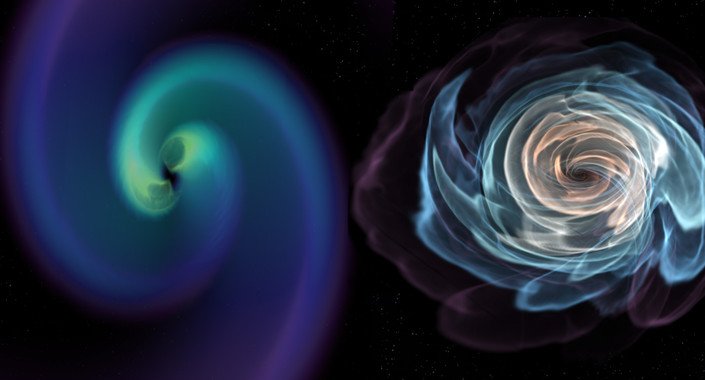Top scientific news from 2017

Among the topics discussed this year by Elhuyar Zientzia, the most influential have been:
1. Two neutron stars detected by gravitational waves
On August 17, 2017, a gravitational wave detection signal was received at the LIGO and Virgo observatories. They concluded that there was a meeting between two neutron stars. It is the first time that the signal of such a phenomenon is received, giving great importance to the simultaneous reception through gravitational and electromagnetic waves.
2. Aitzbitarte finds the low reliefs of the Palaeolithic
In the cave of Aitzbitarte IV (Errenteria) have been found four bas-reliefs of the Magdalenian era: two bison, a horse and another animal that still do not know anything of what it is. They are the first to be found in the Cantabrian chain. Next to them were found about twelve engravings.
3. Using the CRISPR technique, they direct a mutation that produces a disease in human embryos.
Correction of hypertrophic cardiomyopathy mutation in human embryos with CRISPR. The interest that awakens this technique is that Teknopolis has been awarded in the ASEBIO contest. Specifically, ASEBIO awards the communication and dissemination of Biotechnology and has awarded in the category of Television and Radio the report of Teknopolis “CRIPSR/Cas9, scissors to cut the genome”.
4th Agur Cassin
After 20 years since its departure from Earth, after 13 years of observation of Saturn and its moons and rings, and about to exhaust fuel, the Cassini probe has been destroyed by throwing itself against the planet.
5. Second scientific warning to humanity: we are endangering the future
25 years ago they published the manifesto “The warning of scientists of the world to humanity”. Now more than 15,000 scientists have signed a second warning. The manifesto expresses concern over the damage caused to the environment and calls for the need to change behaviour.
6th Hormonal contraceptives and depression: the study of the relationship
Investigating data from more than one million girls and women aged 15 to 34, researchers at the University of Copenhagen conclude that there is a relationship between the consumption of hormonal contraceptives and the tendency to depression.
7. Commissioning of the first CAPV breast milk bank
The newly opened CAPV Breast Milk Bank already has 30 donors and another 80 women are on the waiting list. In fact, there is plenty of scientific evidence about the benefits of breast milk for premature children and, in many cases, their mothers still do not produce enough milk.
8th. Glaciers of the Pyrenees in continuous decline
The Pyrenean glaciers currently occupy an area of 243 ha, 88% less than in 1850, according to a work done by Ibai Rico of the University of the Basque Country and Eñaut Izagirre of the University of Magallanes.
9. Science not loved by women
After International Women's Day, Teknopolis dedicated a monographic session to the situation of women in science. Where are the scientists? Why do many more women than men abandon the scientific career? How can it be a research work that does not consider women as objective and excellent?
10. March for Science
In the face of President Donald Trump's attitude to climate change, several scientists create the March for Science movement. The movement has spread to many cities and has already reached the United States and other countries.
Buletina
Bidali zure helbide elektronikoa eta jaso asteroko buletina zure sarrera-ontzian











